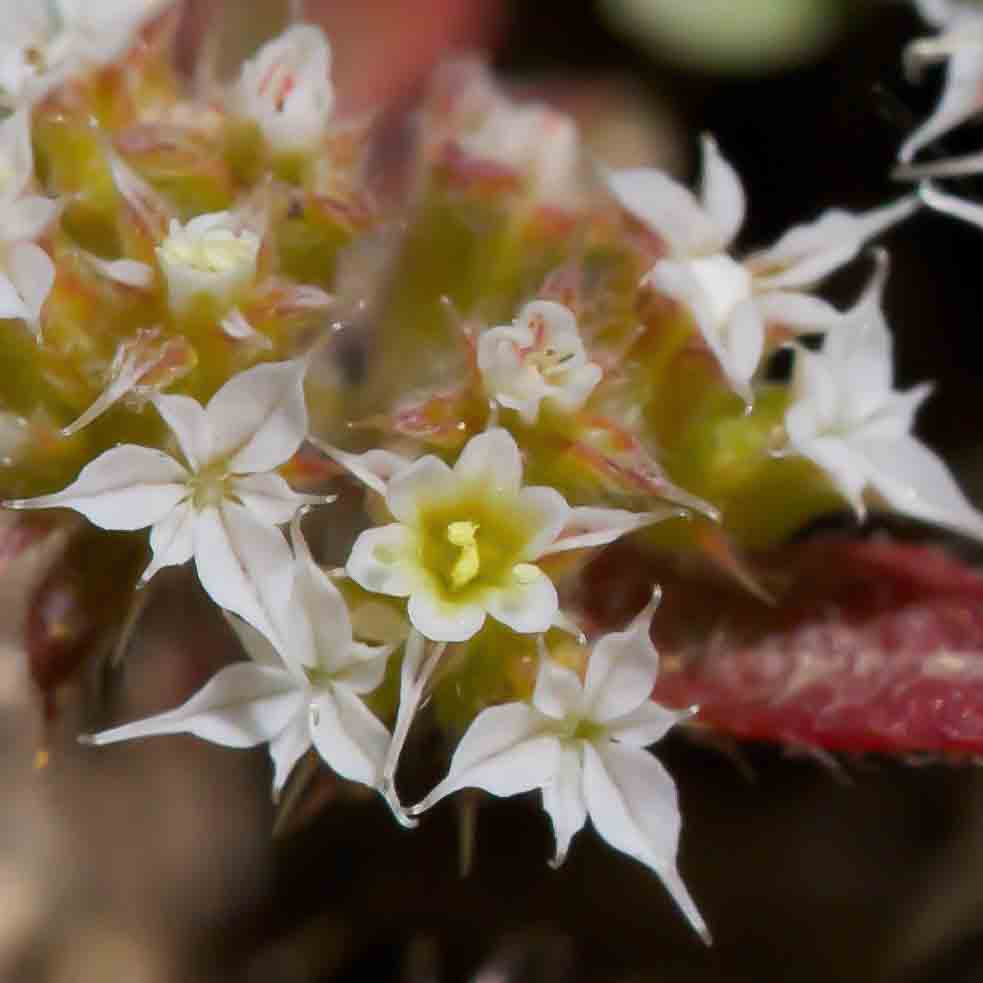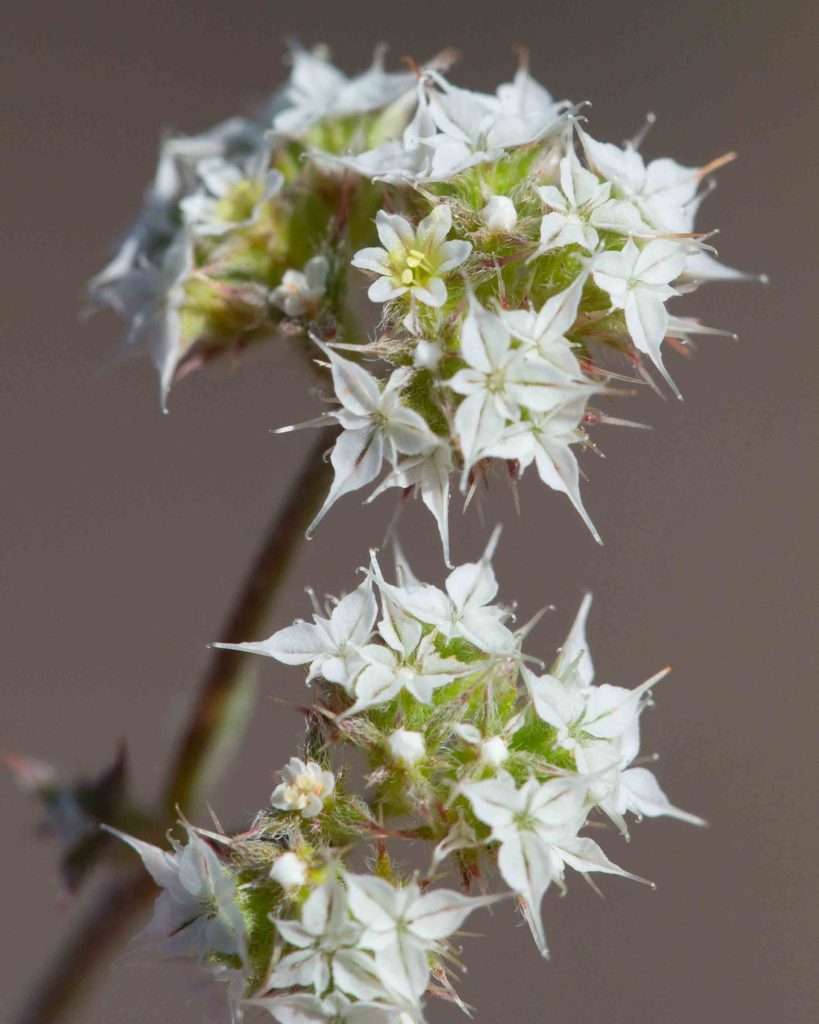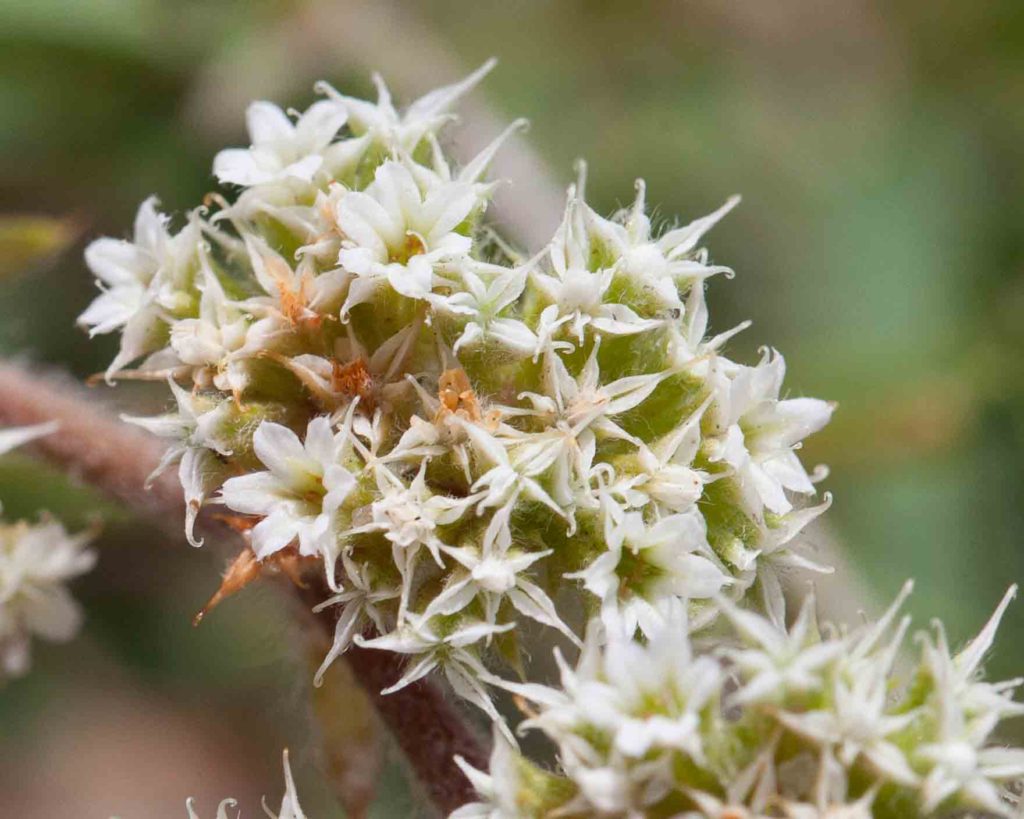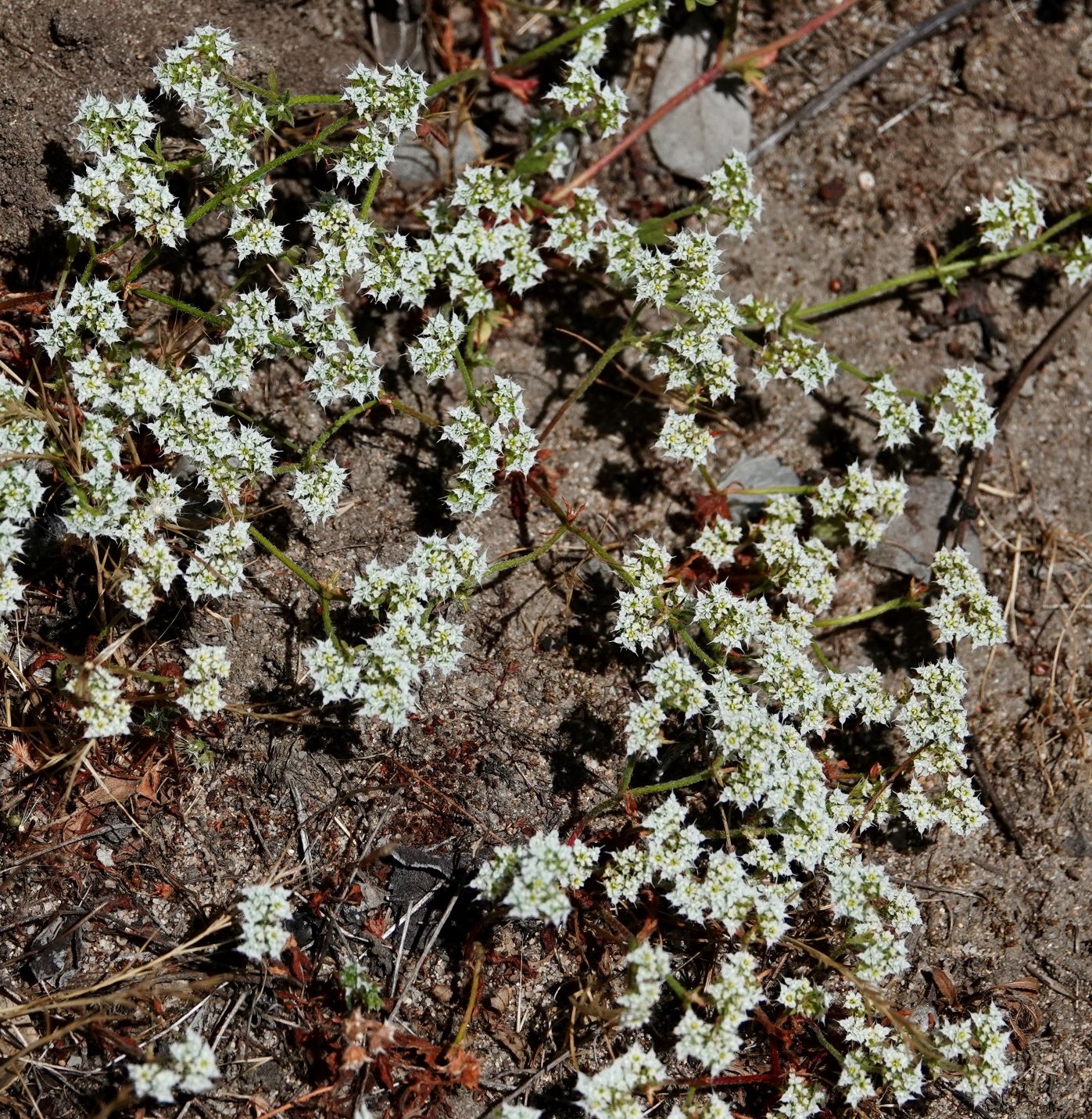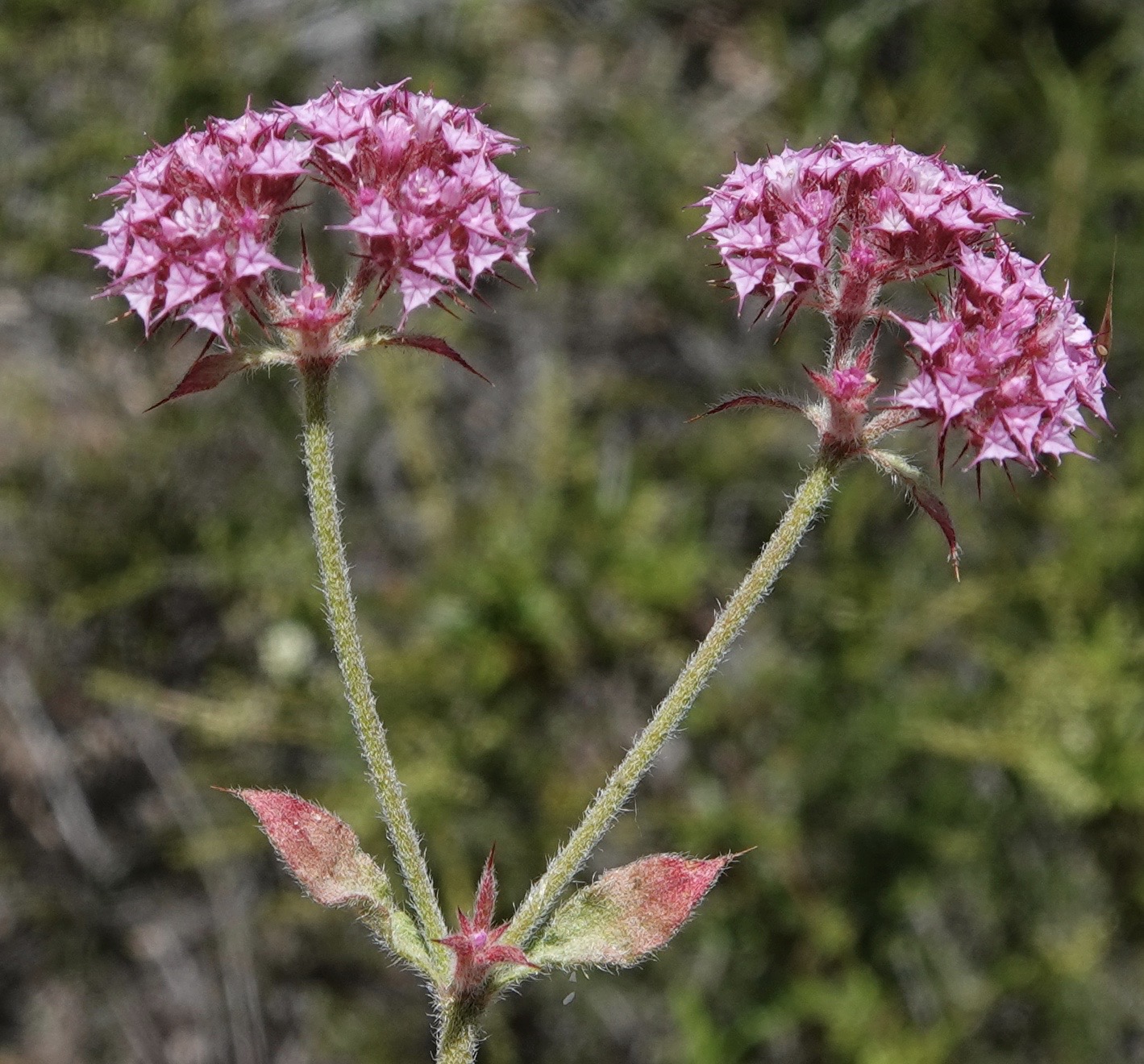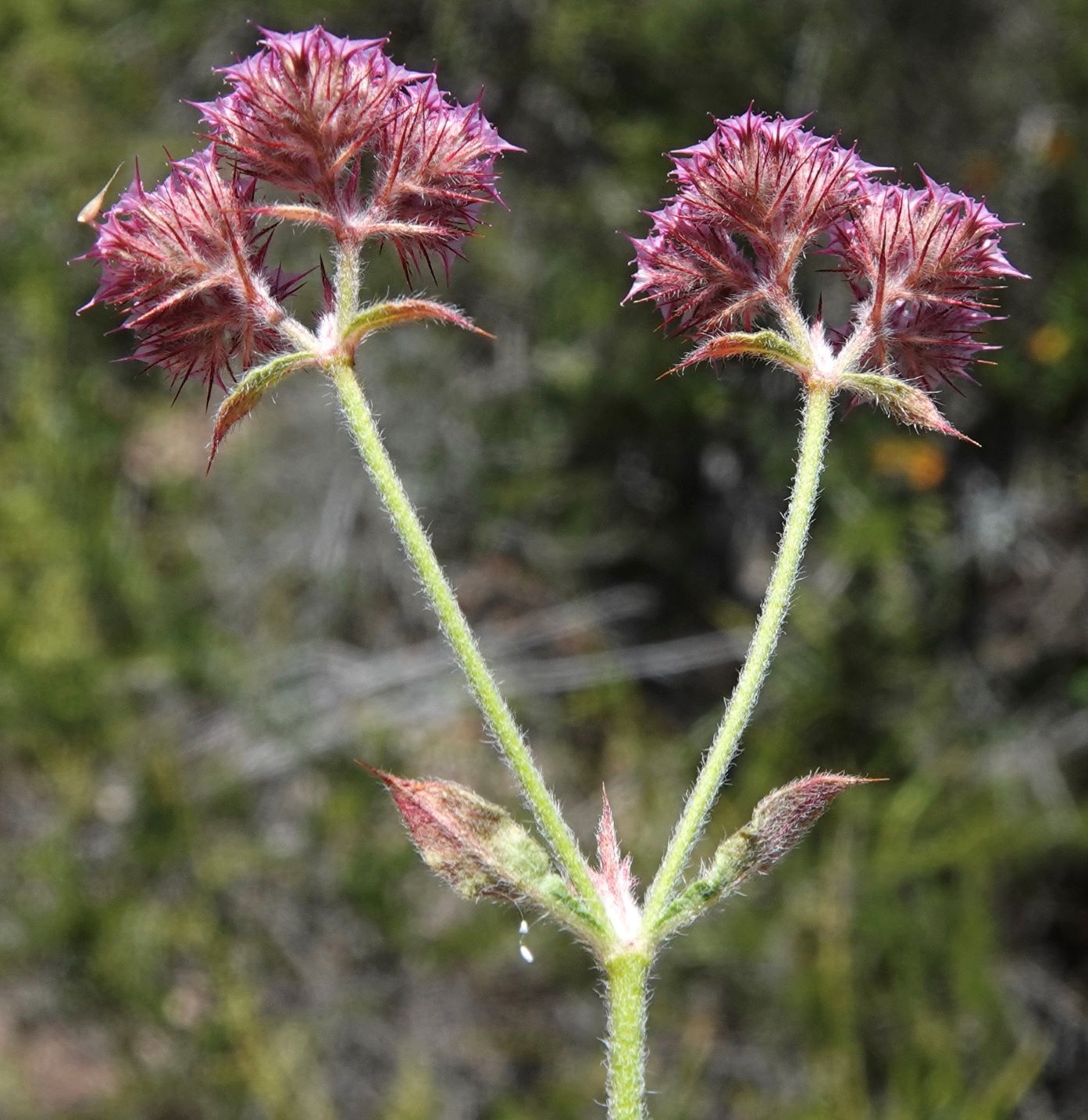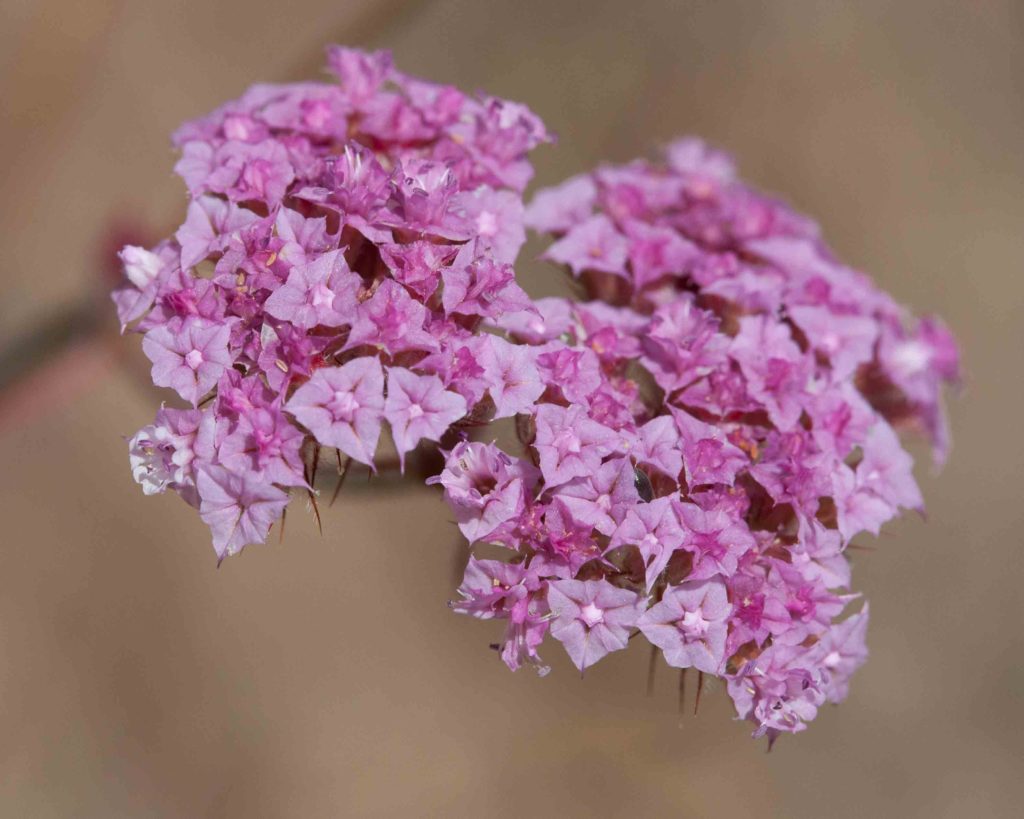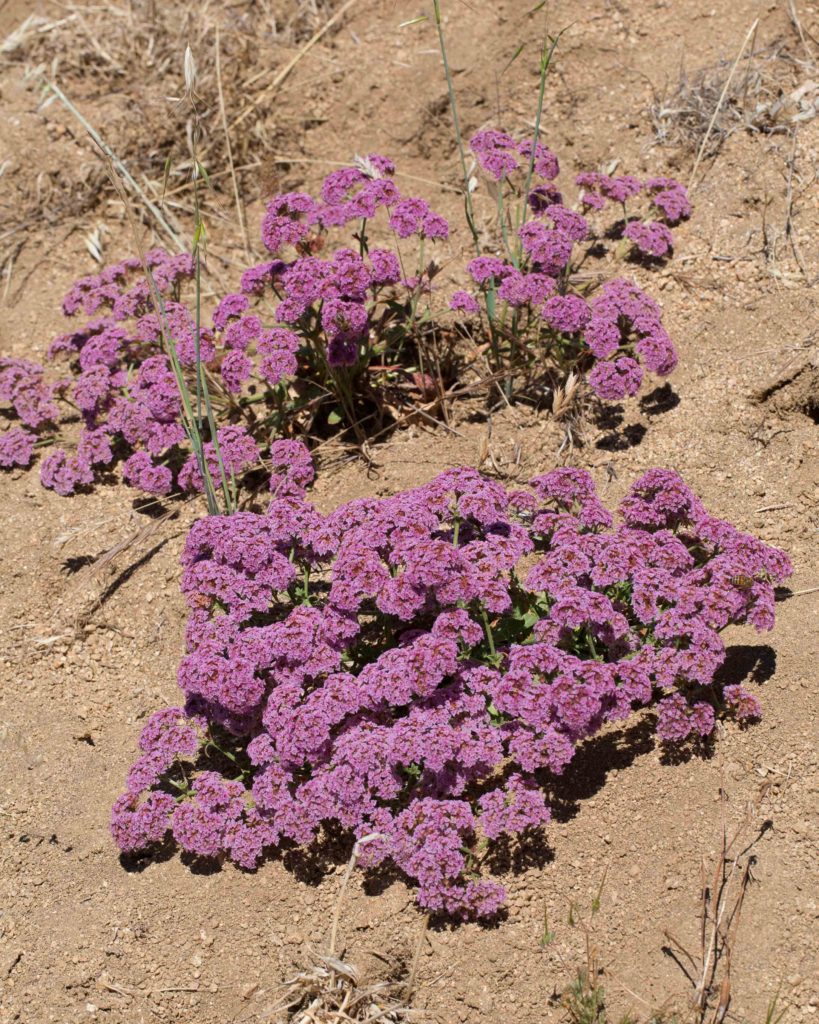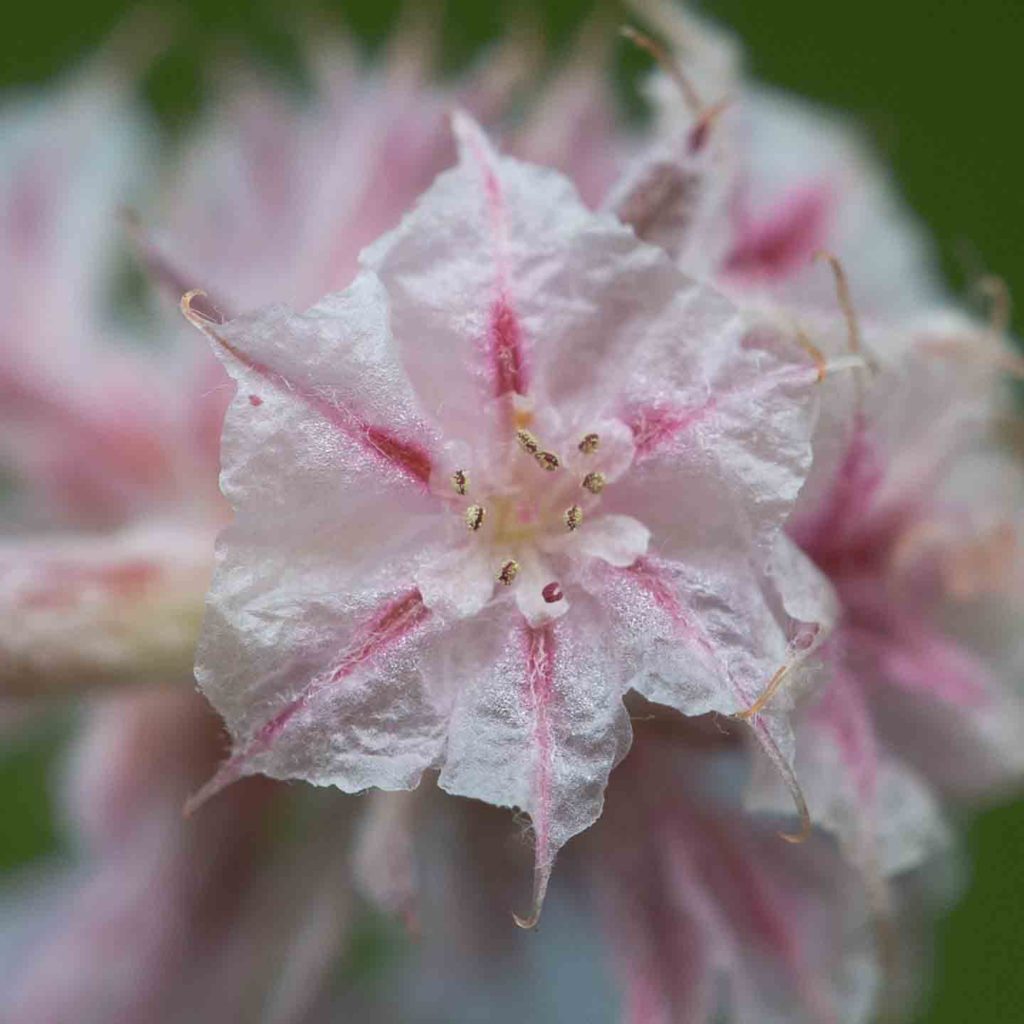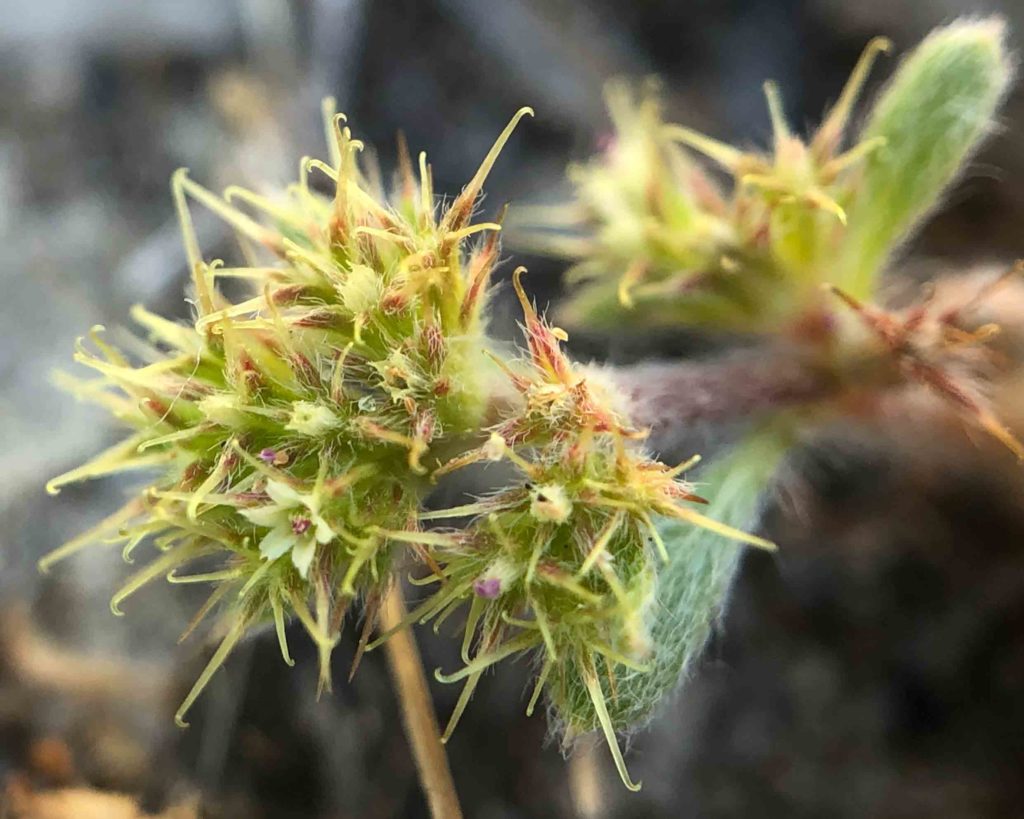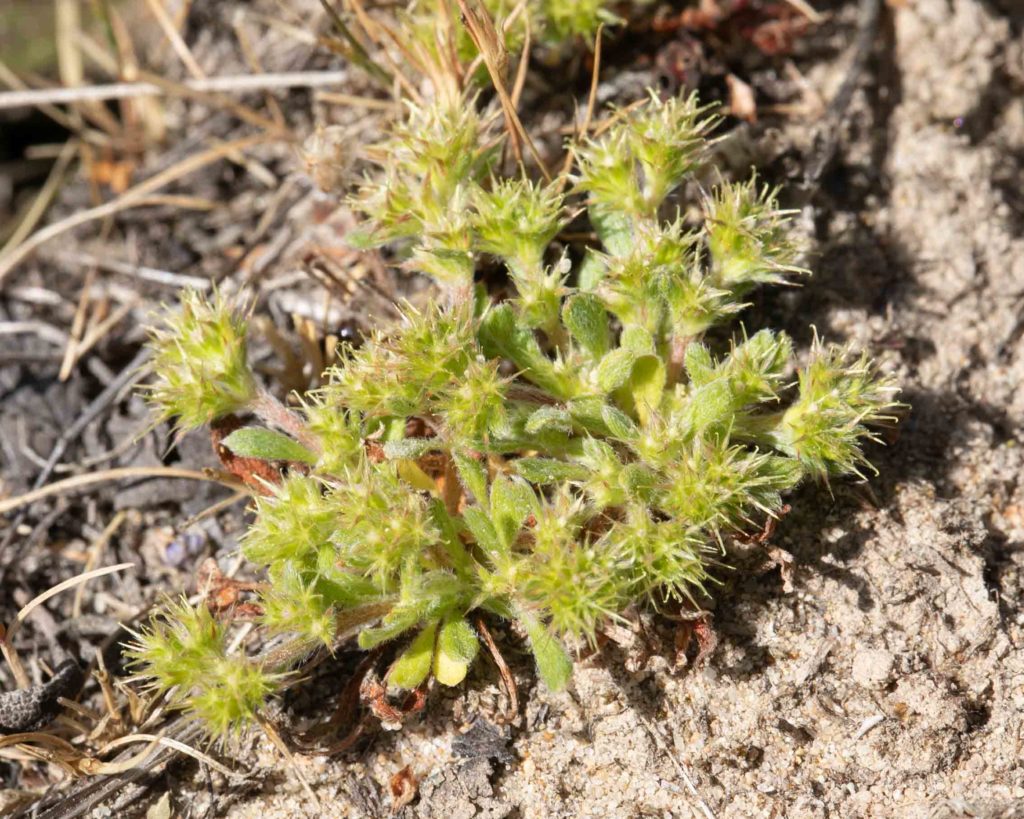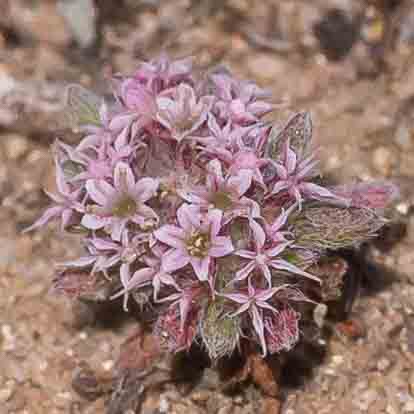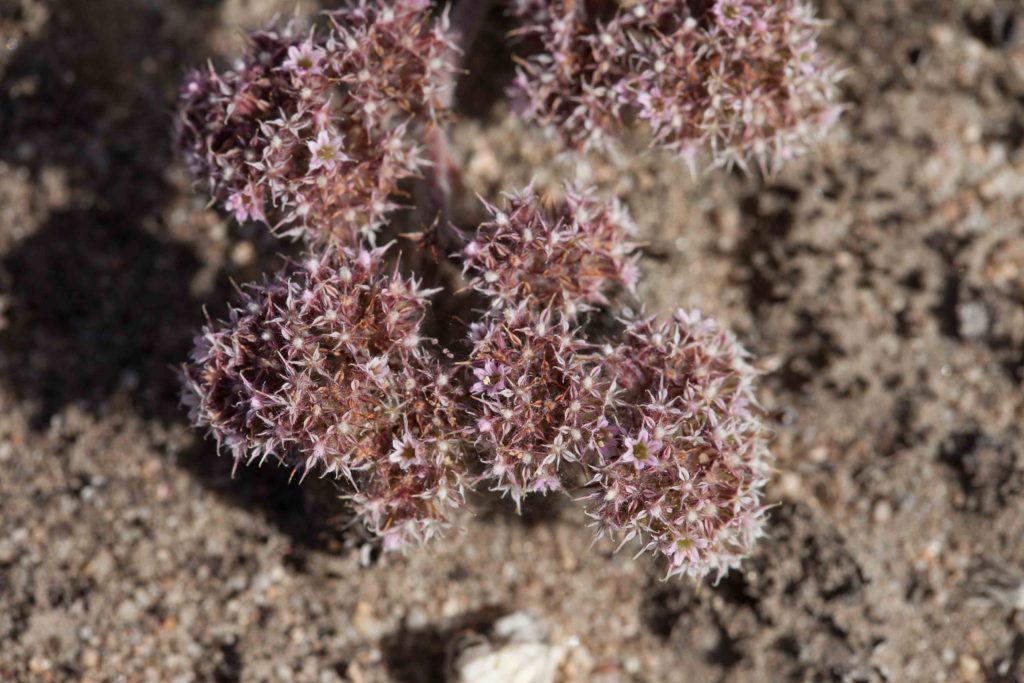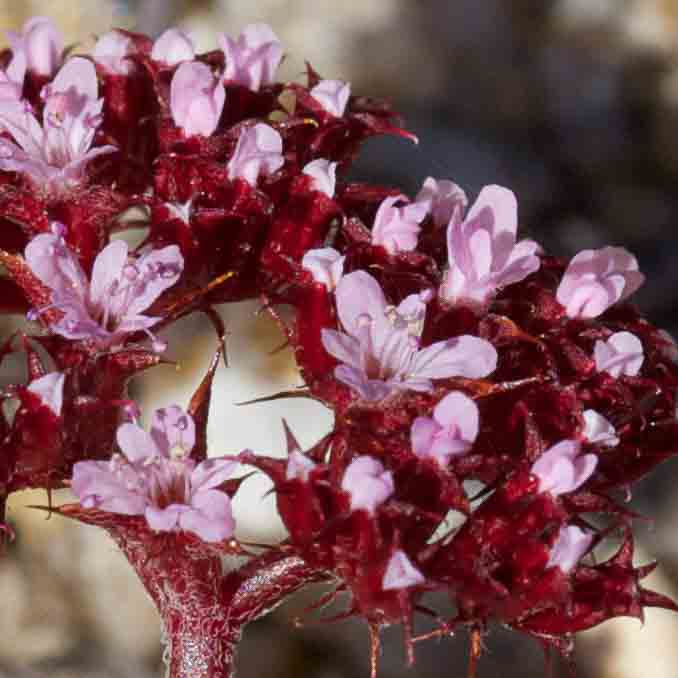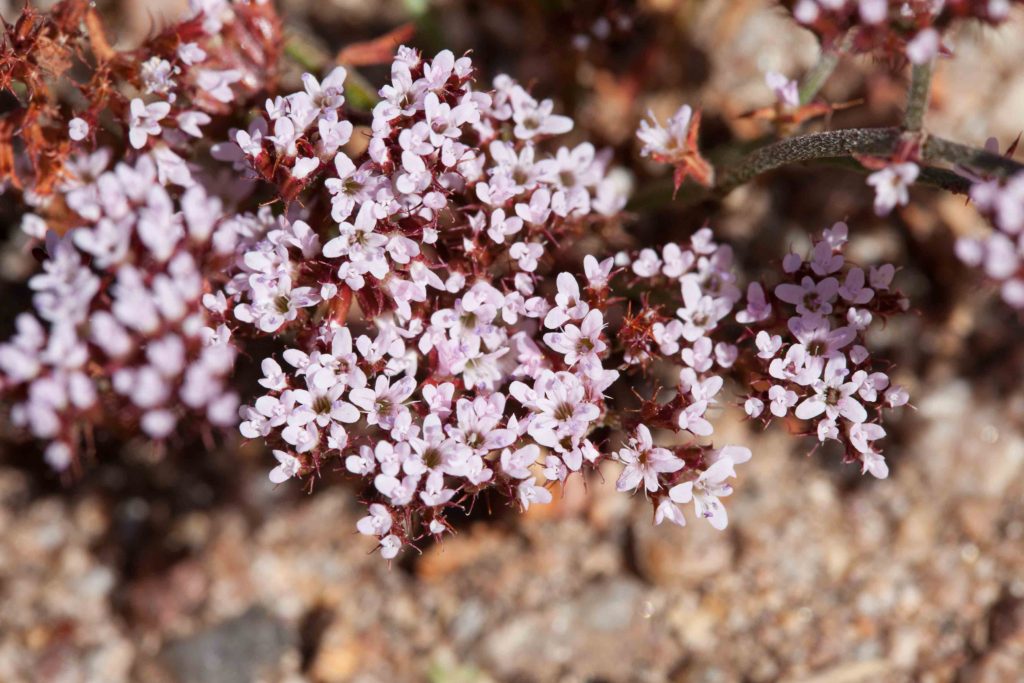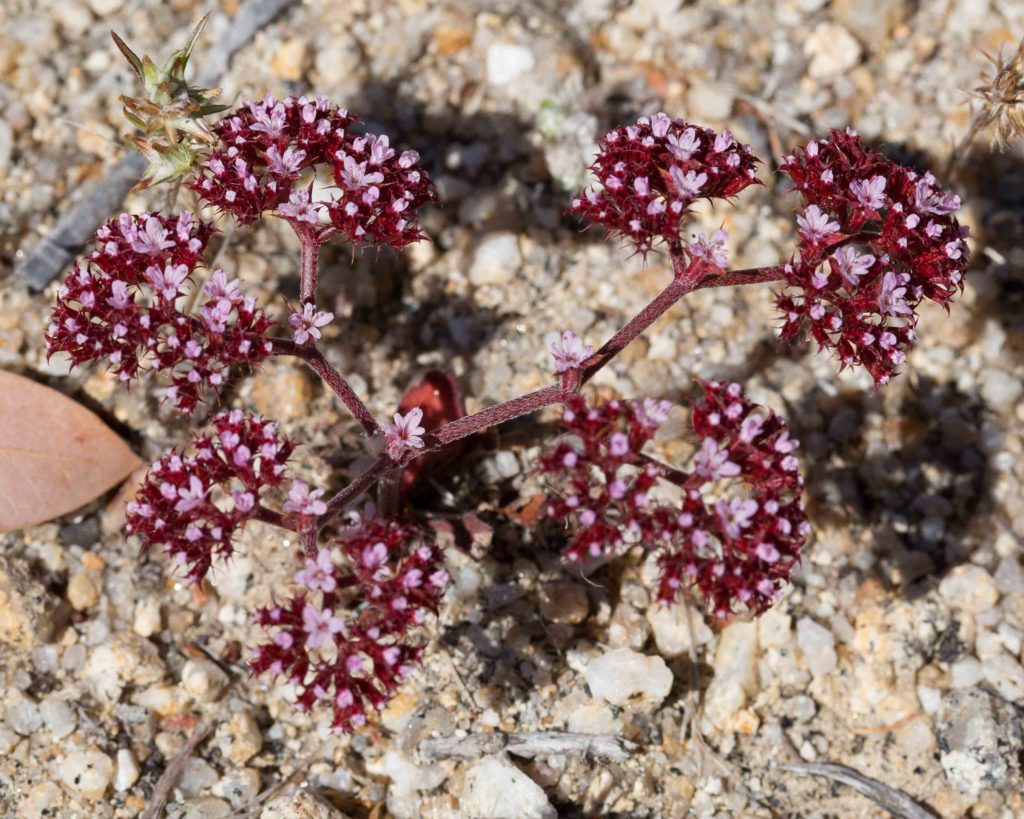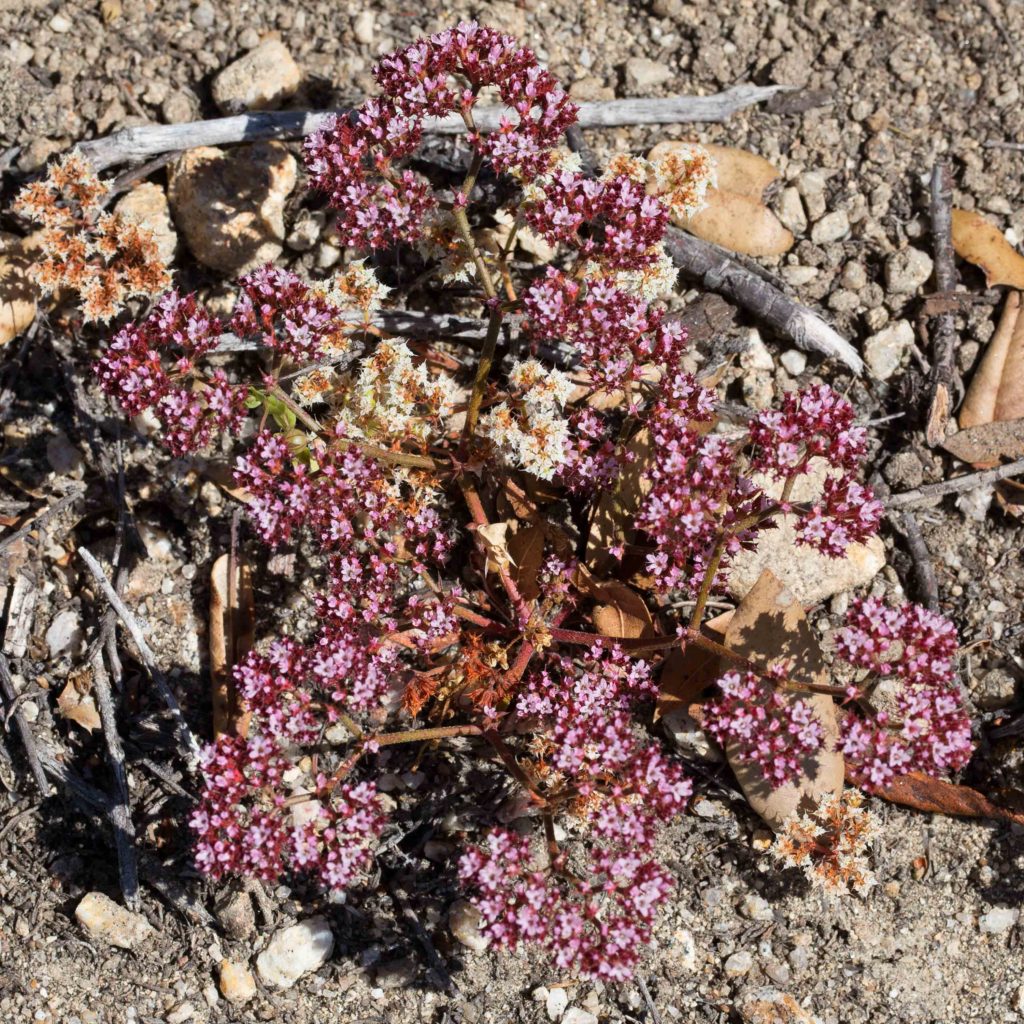Polygonaceae: Knotweed Family — Chorizanthe (Spineflower)
Flowers in this family do not have separate petals and sepals. For plants like this, the term “perianth” is used to describe the flower (i.e. the calyx and the corolla together) and “perianth parts” to describe the individual elements. In spineflowers, what you mostly see are the involucres and involucral membranes. The flowers themselves are 6-lobed, usually a similar color to the involucral membranes.
Diffuse Spineflower – Chorizanthe diffusa
Blooms:
Apr–July
Plant Height:
< 10 cm
Flower Size:
Very small
Origin:
Native
Habitat:
Sandy & gravelly places
Notes:
This plant is prostrate to spreading, and appears greenish-white. It is relatively common, and may be found with Monterey Spineflower (Chorizanthe pungens, see below). It can be distinguished by its yellow-throated white flowers, and generally pure white involucral membranes (occasionally pink or purple). These are not continuous (i.e. spanning the entire space between the ribs), but ovate to round at their base, abruptly narrowing to a long slender tip. The involucral teeth have hooked awns. Photo #4 by CJH.
Douglas’ Spineflower – Chorizanthe douglasii
Blooms:
Apr–July
Plant Height:
10–40 cm
Flower Size:
Very small
Origin:
Native
Rare or endangered?
Yes – 4.3
Habitat:
Sandy & gravelly places
Notes:
The inflorescence is in dense terminal clusters, on stems up to 40 cm long, which are often so short the plant appears prostrate. It has distinctive, triangular involucres, with a continuous, pink membrane. The involucral teeth are straight (i.e. not hooked). The perianth is whitish to pink, the individual lobes themselves often 2-lobed. The plant is common in Monterey and San Luis Obispo counties, but rare elsewhere. Photos #1-2 by CJH.
Pink Spineflower – Chorizanthe membranacea
Blooms:
Apr–July
Plant Height:
10–60 cm
Flower Size:
Very small
Origin:
Native
Habitat:
Dry, rocky slopes
Notes:
As with Douglas’ Spineflower (Chorizanthe douglasii, see above), this has involucral membranes that are continuous. But in this case, they are white to pale pink, with darker pink, hook-tipped teeth. The perianth is likewise white to pale pink. This spineflower is distinguished from others by its greater height, erect growth habit, and the relative abundance of its leaves. Stems and leaves are tomentose, another contrast with Douglas’ Spineflower.
Fort Ord Spineflower – Chorizanthe minutiflora
Blooms:
Apr–July
Plant Height:
< 10 cm
Flower Size:
Very small
Origin:
Native
Rare or endangered?
Yes – 1b.2
Habitat:
Dry, sandy or gravelly slopes
Notes:
This extremely small plant is found only on Fort Ord. It has yellow-green herbage, and tiny, greenish-white flowers which are barely exserted from the involucre. The involucre lacks any membrane, but the individual hooked teeth are noticeably hairy. Formerly misidentified, this has been recognized as a separate species since 2014.
Monterey Spineflower – Chorizanthe pungens var. pungens
Blooms:
Apr–July
Plant Height:
5–15 cm
Flower Size:
Very small
Origin:
Native
Rare or endangered?
Yes – 1b.2
Habitat:
Sandy places near coast
Notes:
Another rare spineflower, this one is found only around Monterey Bay. It is a prostrate plant, with noticeably hairy leaves and flowers. The perianth has white to pink lobes, and green throats. The involucral membranes are white to pinkish, similar to Diffuse Spineflower (Chorizanthe diffusa, see above), but narrower. The involucral teeth have hooked awns.
Turkish Rugging – Chorizanthe staticoides
Blooms:
Apr–July
Plant Height:
5–60 cm
Flower Size:
Very small
Origin:
Native
Habitat:
Sandy, gravelly or rocky places
Notes:
This spineflower has no membranes between the involucral teeth. It is variable in appearance, sometimes prostrate, but often erect and branching with flattish tops. Stems and mature involucres are red. The perianth is rose to red, with lobes that are generally smooth and rounded, but may be toothed. Note that the inner perianth lobes are shorter and narrower than the outer. Basal leaves are oblong and densely hairy on the undersides.
